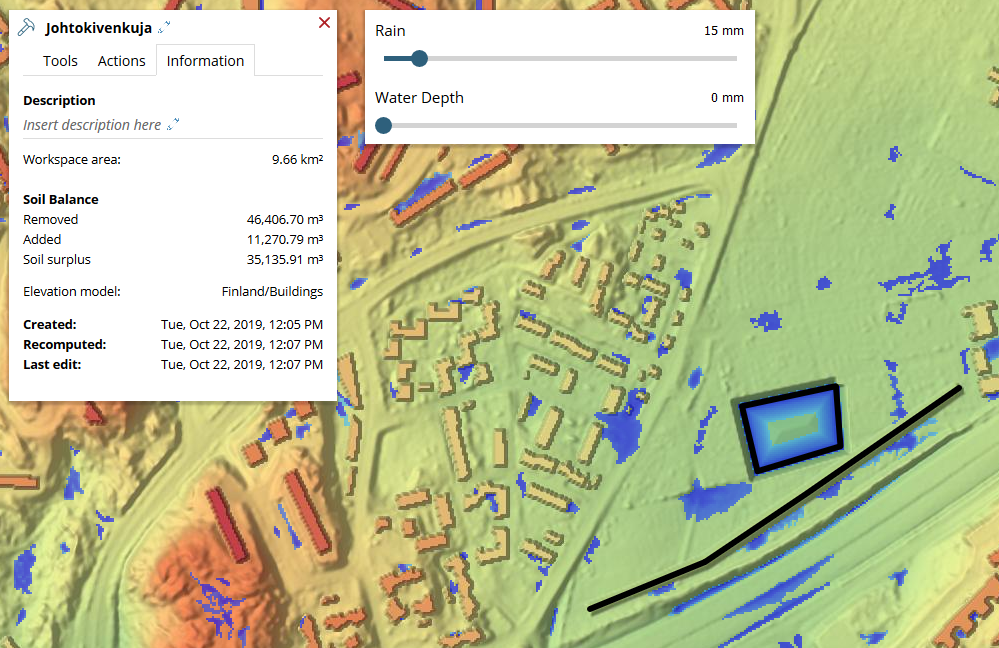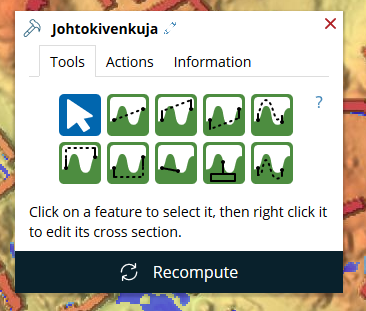-
Documentation
-
About
- Getting Started & Use Cases
- Support
-
What's New
- Simplified tools for designing with contour lines
- DynamicFlood: Organize and understand your computations
- Modelling stormwater networks in Scalgo Live
- National US high-resolution land cover map
- New functionality for CAD users!
- DynamicFlood: Cleaning up rain events and adding historical rains, now available in France
- National Polish high-resolution land cover map
- DynamicFlood now available in Great Britain
- Global contour maps now available
- Updated Swedish topsoil map
- Scalgo Live Global theme is updated with new elevation and land cover data
- Detailed culvert information in DynamicFlood
- No more Lantmäteriet fees for Swedish data
- Depth-dependent surface roughness (Manning) in DynamicFlood
- Detailed land cover map for all of Great Britain
- National French high-resolution land cover map
- Work with multiple features simultaneously in the canvas
- Spill points on flash flood map and depression map
- New surface roughness (Manning) parameters for DynamicFlood
- Workspace and Modelspace sharing updates
- Regionally varying rain in DynamicFlood Sweden
- Veden imeytyminen nyt osana rankkasadeanalyysejä
- Use Scalgo Live anywhere in the world
- DynamicFlood: Live model speed info and regionally-varying rain events
- Sea-level rise: Download building flooding information
- Detailed contour maps and editable buildings in Workspaces
- New in Modelspaces: Explore hydrodynamic simulations and visualise the dynamics of flow velocity
- National German high-resolution land cover map
- Specify basins and protrusions by drawing their outer boundary
- Simplified path features
- National Norwegian high-resolution land cover map
- Organise and communicate on a digital canvas
- New sidebar to help organize your analyses and queries
- Sliding contours
- Ny skyfallsanalys och en ännu bättre marktäckekarta
- New land cover map for Finland
- Depths in the depression map
- New Danish land cover map with more classes
- National Swedish High-Resolution Impervious Surface Mapping
- Watershed tool updated with even better descriptions of catchment characteristics
- National Flash Flood Map with Infiltration and Drainage for Denmark
- Add your own WMS layers to SCALGO Live
- Enriched building data in Denmark
- National hydrological corrections and Land Cover for Poland
- National hydrological corrections for Norway
- Updated Impervious Surface Mapping for Denmark
- National hydrological corrections and updated local data for Finland
- Fast and intuitive tools to work with infiltration and land use
- Improvements to vector imports and exports
- National Danish groundwater model
- New Sweden high-resolution model
- New powerful depression map and more analyses visualization options
- Introducing Modelspaces: Get your hydrodynamic models into SCALGO Live
- Use case videos
- Access a EA flood maps inside SCALGO Live
- Improved map export
- New powerful ways to edit the elevation model
- Better coloring of flooding layers and sea-level depth filtering
- National Danish High-Resolution Impervious Surface Mapping
- National access for local and regional organizations
- Simpler, more powerful downloads
- Customize Layer Transparency
- Hydrological corrections and new data in Sweden
- Improved export functionality
- Access a wide range of authorative data inside SCALGO Live
- Importing VASP data
- Measure gradients, undo edits, and Norway updates
- New terrain edit features, soil balance information and much more...
- Browse historical orthophotos in SCALGO Live
- Emergency planning with sea-level rise from national forecast data
- Detailed information about watershed composition
- Better styling of imported vector layers
- New Danish Elevation Model
- Work with gradients in the profile widget
- Flood risk screening from rivers and flow paths
- New workspace tool: Raise and lower terrain uniformly
- Importing LandXML TINs, LAS point clouds
- New model in Sweden
- Side slopes on workspace features
- Drag and drop enhancements
- Swedish contour maps
- Subsurface basins and sewage drains in workspaces
- New Interface
- Volume information for watersheds and flow paths
- New powerful tool for emergency response and coastal flood prevention
- Denmark: New flash flood map
- Sweden: Geodatasamverkan setting for Swedish users
- Import custom terrain models
- New Hydrological Corrections
- Elevation contours now available
- Download orthophotos as JPEG and PNG
- Subsurface structures in workspace
- Sea-levels in terrain profiles
- Updated orthophotos
- Models and analysis update
- User interface updates
- User interface updates
- GeoDanmark/FOT data, Matrikelkortet now available
- New flash flood map
- Download of risk polygons
- Updated orthophotos
- Nationwide hydrology on the new DHM/2015 model now available
- New flash flood map computation available with watershed download
- DHM/2015 variants and sea-levels now available nationwide
- DHM/2015 now available nationwide
- Hydrology on the new DHM/2015 model now available
- New DHM/2015 Model - now with buildings
- New DHM Model
- Watershed Tool
- Ad hoc layers
- Nationwide contour maps for all countries
- Single Sign-On
- Data Fees
- User Interface
- Canvas
- Analysis
- Workspaces
- Modelspaces
- Working with CAD data
- Core+ DynamicFlood
- Core+ NatureInsight
- Core+ PropertyResilience
- Streams and Flow
- Physical Properties
- Country Specific
-
About
What's New – New terrain edit features, soil balance information and much more...
Oct 24, 2019
This new release includes several new features, including an extension of the terrain edit features that allows you to make even more realistic terrain editing, and new workspace information about how much soil you have added and/or removed while editing the terrain. Read more below.
Cross sections of terrain edits
There are now three different ways of specifying cross sections of terrain edit features.
- The standard boxy cross section where a cross section has a width and is drawn with vertical sides. This is the standard cross section type in SCALGO Live.
- Cross section defined using slide slopes with fixed user-specified gradients. This is e.g. useful for specifying river cross sections from idealized cross section specifications and for specifying simple side slopes of e.g. roads and dikes.
- New in this release, fully controllable cross sections allow you to control the exact cross-sectional geometry of your terrain object. Use this new feature to e.g. design more accurate road surfaces, dikes and riverbeds.
New in this release is also the ability to chain multiple terrain edits together to seamlessly switch from one cross section to the next in a longer trace. You can also right click to insert a new cross section at any point on a selected feature and delete other cross sections. See the video below for a demonstration of some of the new possibilities.
For more information about the new options, please consult the manual or contact support.
Demonstration of the new ability to fully control the cross section of your terrain edit.
Soil balance
For many projects it is interesting to know how much soil must be added or removed from the project site. We now provide a workspace-wide total of how soil was removed and added to the workspace using terrain edits.

Download depression map
We have made it possible for you to download the depression map directly to easily get the extent and volume for any depression in the elevation model. The depression map can be downloaded as a set of polygons delimiting the extent of each depression, each polygon is annotated with the volume of its corresponding depression.
Workspace redesign
We have launched a slight redesign of the workspace dialog to put the terrain edit tools front and center. To do this we have added three tabs; The Tools tab contains all the terrain edit tools and will be selected by default when opening the workspace. The Actions tab contains the other actions you can perform in a workspace that are not related to terrain editing e.g. share or duplicate workspace. The Information tab contains information about your workspace such as time of creation, which terrain model the workspace was created from and the accumulated soil balance of the terrain edits.
If you have made changes to your workspace that requires you to update the analyses in the workspace, we now display a big recompute button to remind you to do so. Once the workspace analyses are up to date, the button disappears.

Cadastral maps in Finland
Cadastral maps are now available for Finland and will be updated weekly. They can be found in the library (click the Add button at the bottom of the layer list). Also, the numeric codes used in the buildings dataset that are shown when doing a point query are now converted according to the specification from Maanmittauslaitos.